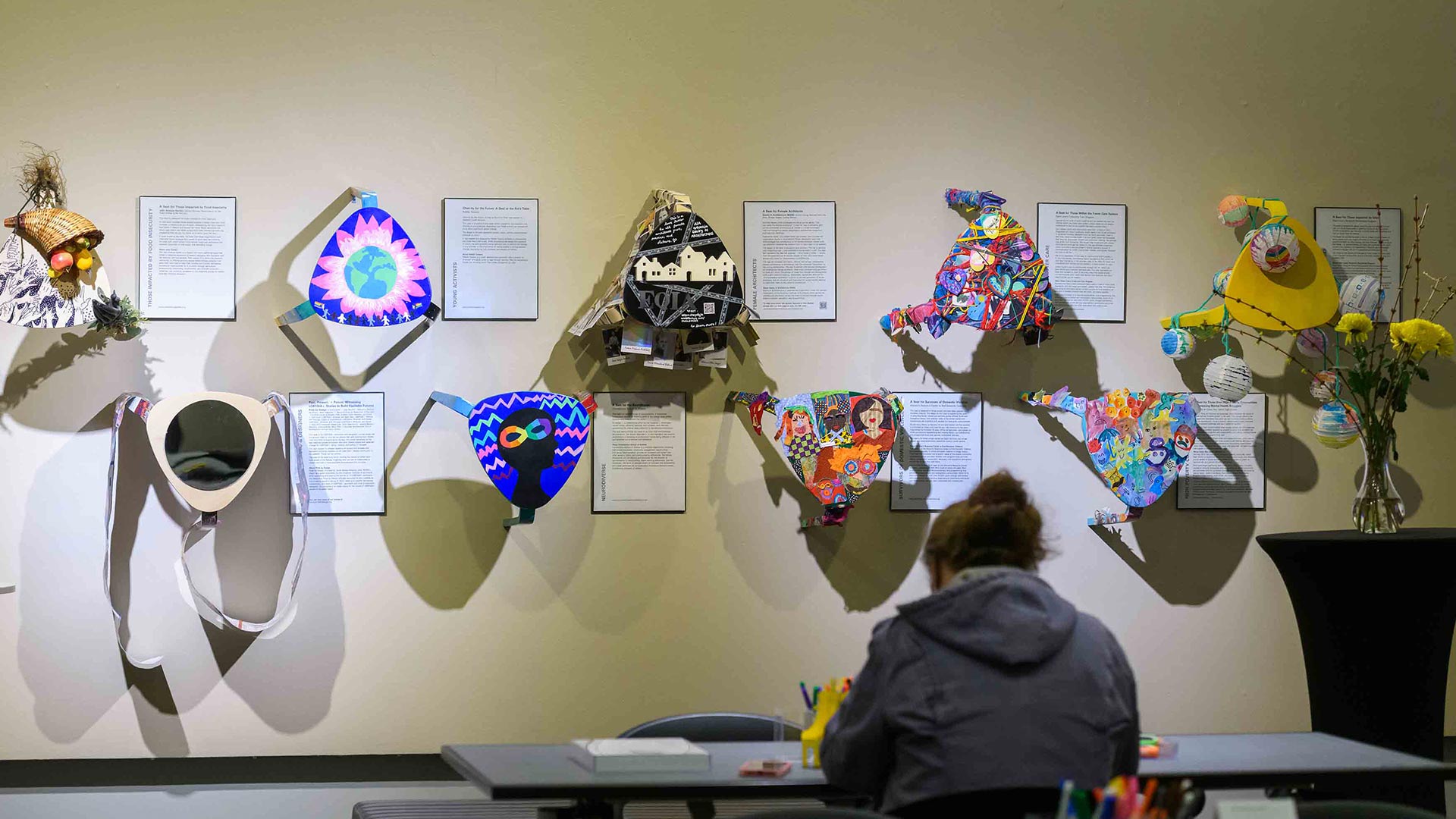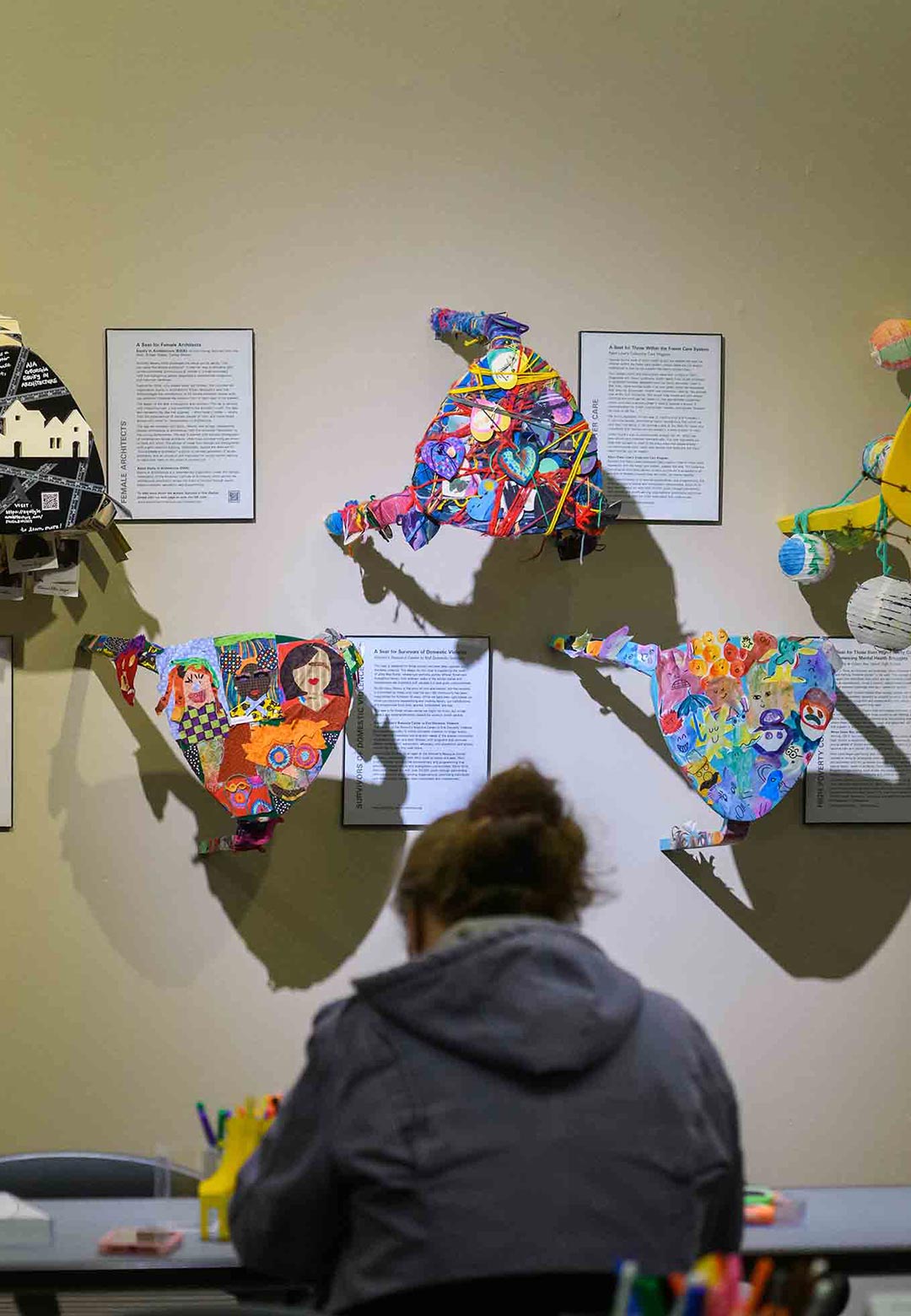Please Be Seated: A Century of Chair Design presently on display at the Museum of Design Atlanta (MODA) in Atlanta (USA) explores the history and cultural significance of chairs over the past 150 years. The exhibition, which runs until March 24th, 2024, showcases some of the most legendary seating designs from the most well-known furniture designers and brands in the world. The show pays homage to chairs and chronicles their development in the last century. Moreover, Please Be Seated exhibits how chairs are important historical artefacts and significant markers of their time. It also underscores how chairs can represent the fashion and ethos of a particular moment in time or stand for an epochal idea.
Please Be Seated, which is presented by MODA in collaboration with Switch Modern, an Atlanta-based furniture store, is divided into two sections. The first part of the show is a summary of iconic seating from the 19th to 21st centuries and an opportunity for visitors to see avant-garde chair designs from all over the world. The second section of the exhibition focuses on ‘power’ chairs designed by the local design community of Atlanta. The aim of the show is to help viewers rethink the roles of chairs in their lives. From traditional to modern, the display takes visitors on a journey through more than a century of chair design, uncovering the stories behind one-of-a-kind pieces of furniture. “This exhibition goes beyond mere aesthetics to demonstrate how material and technological advances have driven the design of chairs in the past century. The exhibition also explores chairs as also powerful symbols of culture, status, and artistic expression,” mentions Laura Flusche, Executive Director at MODA.
Exploring the history of chairs
In addition to physical examples of these chairs, the exhibit also includes images and videos of the designers and their processes. Featured chair designers include leading artists from around the world, including Ron Arad, Harry Bertoia, Marcel Breuer, Ray and Charles Eames, Julia Esque, Piero Gatti, Frank Gehry, Eileen Gray, Josef Hoffman, Walter K, Jean-Marie Massaud, Lina Obregón, Verner Panton, Cesare Paolini, Bertjan Pot, Andres Reisinger, Eero Saarinen, Philippe Starck, Michael Thonet, Kevin Walz, Marcel Wanders and Franco Teodoro.
Highlights include the Thonet 214 chair, which is a classic bentwood design, boasting elegant curves and a comfortable cane seat. Conceptualised by cabinetmaker Michael Thonet in 1859 in Vienna, its inventive steam-bending technique and lightweight construction made it both chic and practical, contributing to its enduring popularity. The Charles and Ray Eames' moulded fibreglass chair is a well-loved design featuring a single-shell fibreglass seat that conforms to the body. It was originally intended to be an affordable chair for everyone and remains an adaptable and stylish piece of furniture.
Bits&Parts is a 3D-printed chair designed by Joris Laarman of Laarman Lab from the Netherlands. This unique 3D-printed chair can be assembled from several puzzle-like pieces, making it accessible for small 3D printers. The Bibendum Lounge Chair is a plump and bulbous armchair crafted by Eileen Gray in 1925. Its name and form are inspired by the Michelin Man, and it is known for its luxurious comfort and eye-catching form. The Wallace Lounge Chair is a contemporary interpretation of the classic English Chesterfield design. It features channel-stitched leather upholstery, sloping armrests, and an angular wooden base.
The Louis Ghost Chair is a transparent armchair inspired by the Louis XV style. Designed by Philippe Starck in 2002, it is made of polycarbonate and is known for its durability and stackability. Despite its delicate appearance, it is strong and can be used both indoors and outdoors. Lastly, the Hortensia Lounge Chair, conceptualised by Andrés Reisinger and Júlia Esqué for Moooi, is evocative of a blooming hydrangea flower. Its unique upholstery is made from over 20,000 laser-cut petals, crafting a soft and textured seating experience. Created as an NFT by Reisinger, the chair's form and customisable fabric options make it a coveted piece for any home.
Across from the first exhibit is a hallway with panels featuring images and information titled ‘Seats of Power.’ This hallway connects the first section of the exhibition to the second part and includes photos and text showcasing various powerful thrones from history. It exhibits how thrones have been historically significant and how their influence extends beyond their visual beauty. These panels include vivid photos of King Tutankhamun’s throne, the jaguar throne of El Castillo from Chichén Itzá in the Yucatan and Black Panther Huey Newton seated in the iconic peacock chair, among others.
Social significance of chairs
Section two of Please Be Seated delves into the historic power dynamics and social significance of chairs. It explores Shirley Chisholm's statement, "If they don't give you a seat at the table, bring a folding chair," with an exhibit that encourages visitors to think about chairs as symbols of space, identity, and empowerment. For this section, the Museum of Design Atlanta invited Atlanta-based artists to embellish folding chairs sourced from IKEA.
Artists, designers, and community groups contributing to this portion of the exhibition include Cristo Rey, Go Paint Love, Pride x Design, Pebble Tossers, Jolly Avenue Garden, Deanna Sirlin, Jamaal Barber, Darya Fard, Kristan Woolford, Masud Olufani, Patricia Hernandez, EQiA (Equity in Architecture), Connections School of Atlanta, Global Village Project, Women’s Resource Center to End Domestic Violence and Elizabeth & Kurt Seidle. The resultant chairs include Jamaal Barber’s Chair for the Ancestors, Kristen Woolford’s feminist Chair for Women in Technology, Engineering and Gaming, and three-legged stools created by community-based organisation—the Jolly Avenue Garden. Each of these chairs stands for a social justice issue. For instance, the three-legged stools are dedicated to people impacted by food insecurity.
In addition to the chairs themselves, the exhibition also includes several interactive elements, such as a video game by MSCHF, known as Chair Simulator, which challenges customary notions of design and gaming by merging them into an immersive experience. Please Be Seated is a fascinating exhibition that offers a unique perspective on the history and evolution of chairs. Reinforcing MODA’s commitment to fostering collaboration and innovation in the world of design, the show also features objects on loan from City Issue, Westside Modern, Dolce & Gabbana Casa, and Cartessa Design. It is a must-see for anyone interested in design, furniture, or history. The exhibition offers visitors the opportunity to explore the transformative power of path-breaking furniture in our lives and the artistry behind a century of design evolution.
Please Be Seated: A Century of Chair Design is on display until March 24, 2024, at The Museum of Design Atlanta.






 Sign in with email
Sign in with email










What do you think?